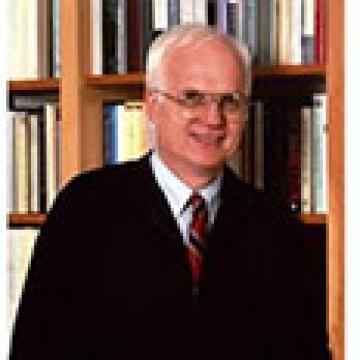William McKinley: Death of the President
William McKinley traveled more than any American President up to that time, and he was on the road again on the morning of September 6, 1901. Impeccably dressed in a boiled white shirt with a starched collar and cuffs, pin-striped trousers, a black frock coat, and a black satin necktie, he was off to Buffalo, New York, where he gave a speech at the Pan-American Exposition. That afternoon, he attended a public reception at the exposition's Temple of Music. Standing at the head of a moving line of greeters, McKinley shook hands and smiled, enjoying the adulation and the public contact.
At seven minutes past four o'clock, as McKinley reached for another hand to shake, two sharp cracks broke the hum of human voices. Leon F. Czolgosz, age twenty-eight, a Detroit resident of Polish heritage and an unemployed mill worker of anarchist sentiments, had fired a concealed .32 Iver Johnson revolver point blank into the President's chest. McKinley doubled over and fell backward into the arms of his Secret Service escorts. As he lay bleeding from his wounds, he managed to tell his guards not to hurt his assailant. Then he turned to his private secretary and said: "My wife, be careful, Cortelyou, how you tell her—oh, be careful." Rushed to a nearby hospital by ambulance, McKinley's doctors predicted a recovery. Gangrene had set in around the bullet wounds, however, and he died on September 14, 1901, just six months after his second inauguration.
Czolgosz admitted the shooting. He had taken aim at the President because he believed him to have been the "enemy of the people, the good working people." Czolgosz expressed no remorse for his actions and died in the electric chair on October 29, 1901.
